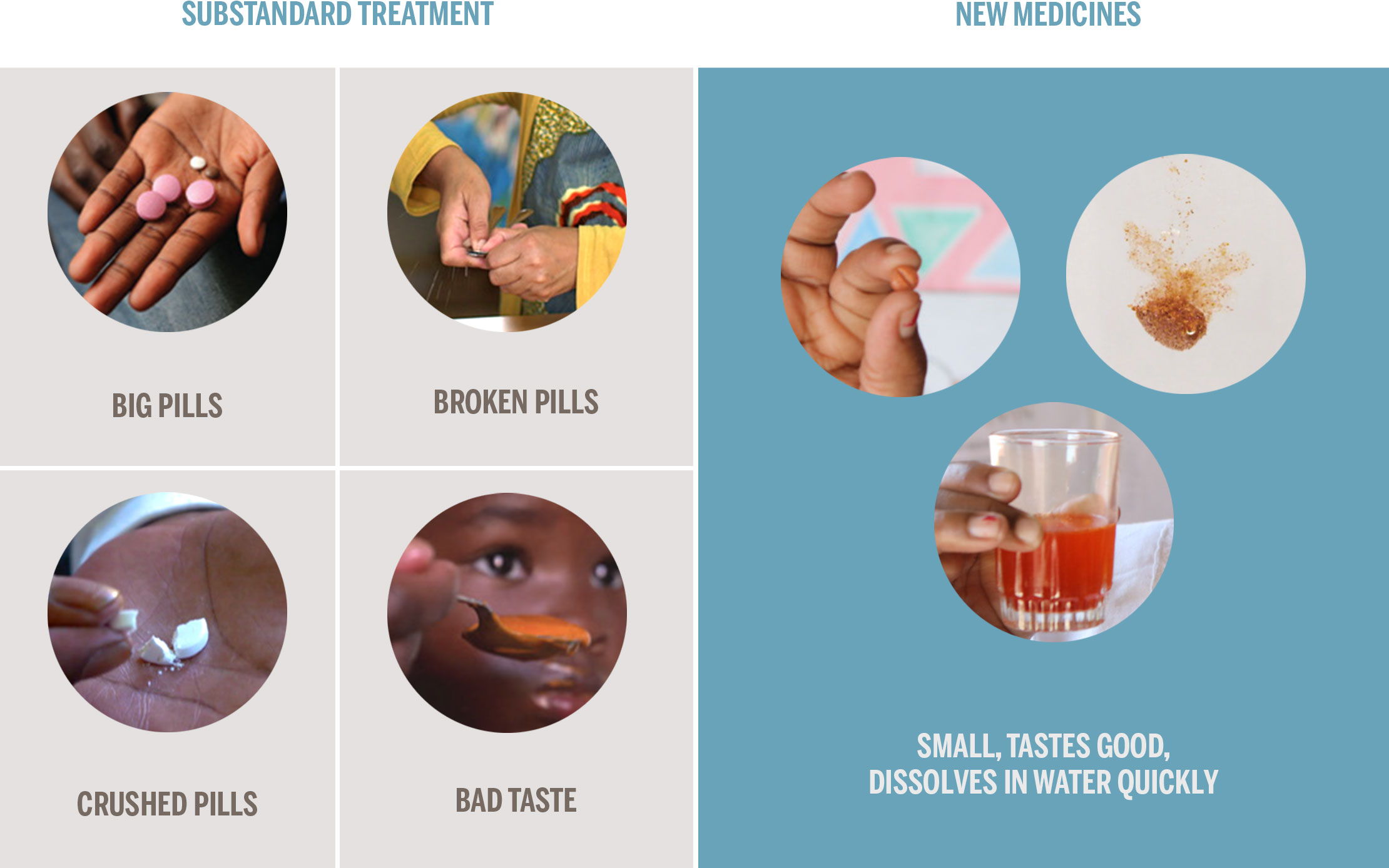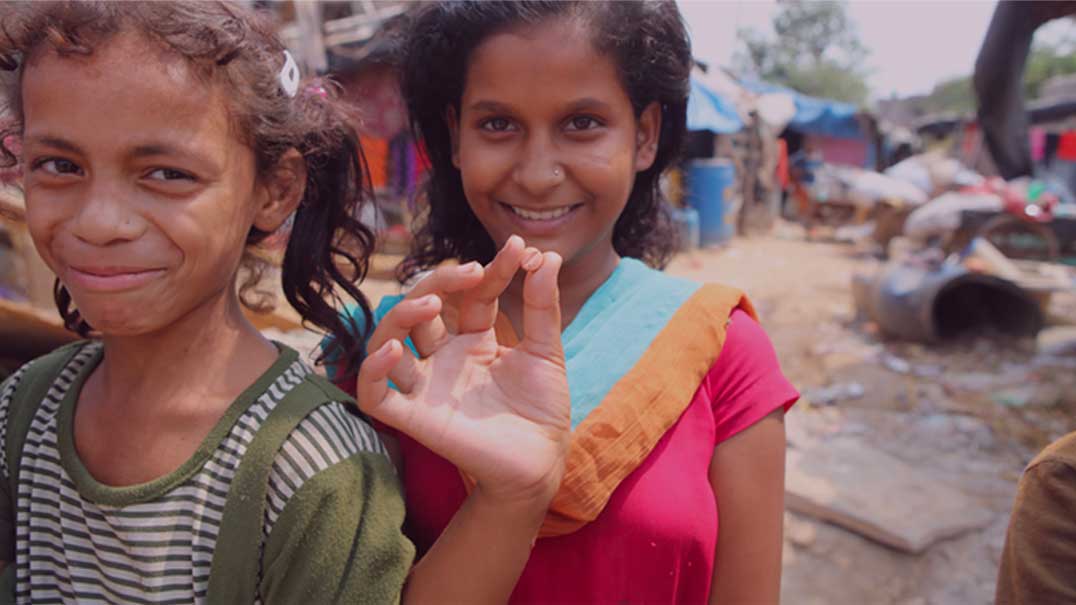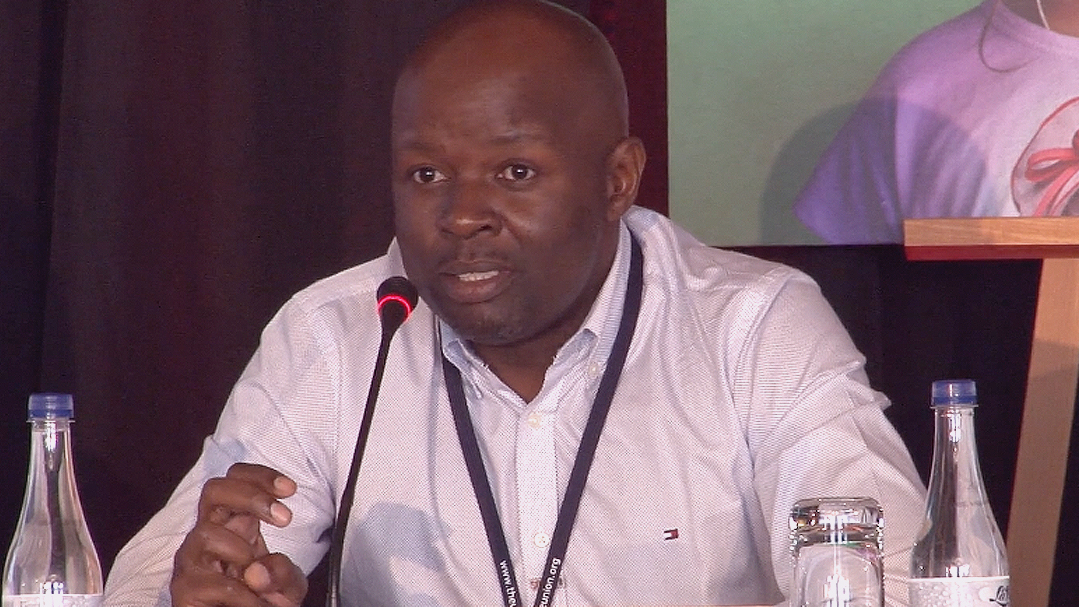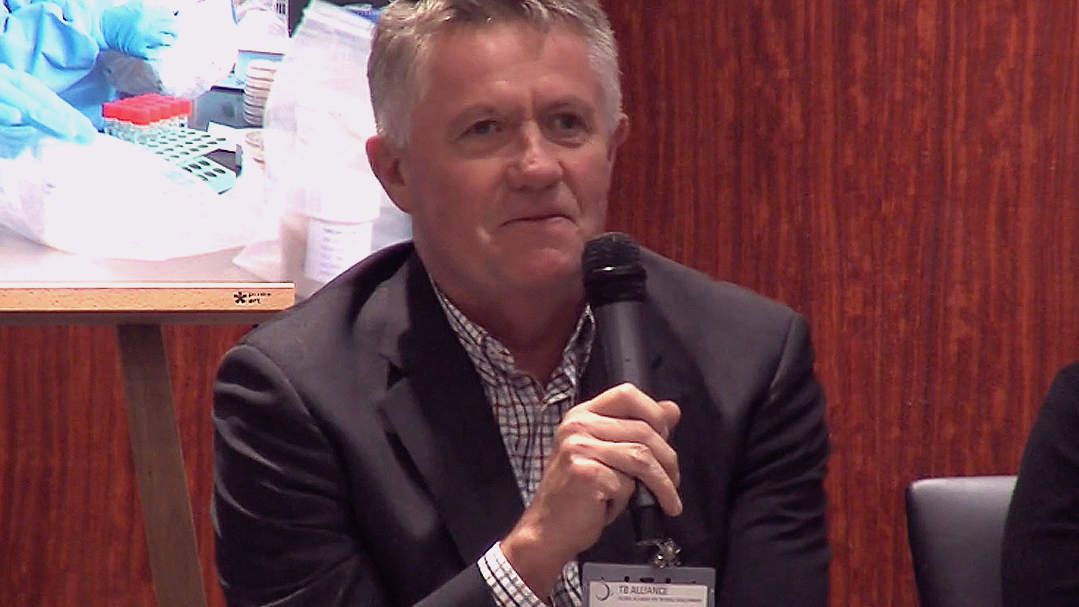


In 2015, TB Alliance and partners announced the launch of child-friendly tuberculosis medicines in the correct doses. The improved treatments are the first to meet the current dosage guidelines set by the World Health Organization (WHO) and have the potential to simplify and improve treatment for the one million children who get sick with TB each year. Children with TB are especially neglected. Previously, there were no appropriate medicines for children with TB, which meant that caregivers and providers needed to split or crush tablets for children. The availability of these products is a result of a project largely funded by UNITAID.
This product introduction is especially important as it marks the first medicines that TB Alliance has brought to
market. In keeping with TB Alliance's AAA Mandate,
the
improved medicines for children are available, accessible, and affordable. The products are
globally available for purchase through the Stop
TB Partnership's Global Drug Facility and directly through the manufacturer, Macleods Pharmaceuticals.
Cutting or crushing bitter tablets each day makes the job of treating children with TB even more difficult. However, the new berry-flavored TB medicines are easy for providers to administer and for children of all ages to take.
The medicines come in the correct, WHO-recommended dose, can be dissolved in a small amount of water, and offer the potential to improve adherence and child survival from TB.

Over the past year, research has continued to foster a better understanding of the market, find where children are most at risk, and create a more supportive environment for TB product introduction. Importantly, this has included research that helped lead to a substantial revision of the WHO's childhood TB estimates, doubling previous estimates. A study focused on the problem of underreporting of childhood TB in Indonesia, Nigeria, and Pakistan, was published in Plos One. Further, a suite of journal articles, including an assessment of the market for pediatric TB, analysis from stakeholder interviews on the challenges facing the market, and an assessment of country readiness for product introduction was published in a supplement to the International Journal of Tuberculosis and Lung Disease. The full supplement can be read here.

Click here to watch this video about a mother recounting her child's struggle with TB and learn what needs to be done to improve children's treatment and survival from this disease.
It's not enough to make new medicines for children available. We can't achieve our mission until every child in need can access these improved TB treatments. Over the past year, TB Alliance has established a number of partnerships to accelerate and maximize the use of these new cures around the world. Watch these videos and learn more.
There is a lot of work that needs to be done, but it's a journey that we in Kenya are willing to take on.

Dr. Enos Masini, the National Treatment Program Manager of Kenya, discusses progress and plans in rolling out the improved childhood TB products.
A simpler treatment has created a great enthusiasm to engage much more deeply in childhood TB.

Dr. Stephen Graham, Professor of International Child Health with the University of Melbourne, Australia, discusses the broad impact the TB Alliance's involvement in childhood TB has had on the broader sector.
There is much to celebrate about the progress in childhood TB. Not only are new treatments available, some countries have already begun to procure the new medicines. Over the course of 2016, together with partners, we expect that the WHO prequalification of the medicines, market authorizations, and an additional commercial manufacturer of the products will continue to expand access of these products to those who need them.
TB Alliance is continuing to work with partners to round out the toolkit needed to treat children with drug-sensitive TB. This will include correctly dosed and child-friendly formulations of single drugs including ethambutol, often recommended in countries with a high prevalence of TB/HIV, and isoniazid, recommended for preventive therapy.
At the same time, when it comes to the neglect of children, the world will repeat the same mistakes again if there is not an increase in political commitment, funding, and other action in this area.
There are still no child-friendly treatments for drug-resistant TB, and the treatment regimens available for children, as with adults, take too long to cure. Traditionally, the development of TB drugs for children has a years-long lag behind that of adults, which itself has moved too slowly. For the children with TB around the world, time is literally a matter of life and death. As a community, we must continue to accelerate the development of pediatric versions of new TB drugs within product development programs and strategies — a paradigm described in an article TB Alliance wrote in collaboration with authors from the European Medicines Agency and Treatment Action Group. We must also continue to push for the adoption of new products such that the drugs are in the hands of the provider or caretaker when a child gets TB.
Visit our childhood TB resources page for more information and downloadable tools related to pediatric TB and new cures.
